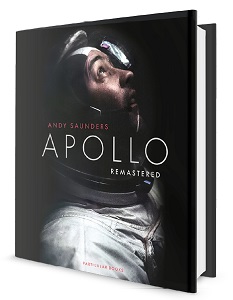No human has captured images from the lunar surface since the Apollo 17 mission in 1972, so our only recourse for 50 years has been to ‘return to the Moon virtually’ by means of documentary films and books. Occasionally, a coffee-table tome on Apollo makes us stop and marvel at our exploration of this nearest planetary body, good examples being Full Moon in 1999 and Apollo: The Panoramas in 2015. But the stand-out Moon book of this decade has to be Apollo Remastered, published in 2022.
As the author reminds us, the Apollo mission photographs are so precious that they are stored in a “frozen vault in Houston” to help maintain their condition. Indeed, the originals rarely leave the vault and almost every publicly available image of the Apollo missions has been “produced from a lower-quality copy of these originals”. Moreover, the apparent contentment with poor quality jpegs in the online world has lowered photographic expectations still further.
However, between 2008 and 2018, the 35,000 originals were taken from the vault and cleaned and scanned to produce a digital image-bank for future photographers to work with. Andy Saunders has inspected not only these digital stills, and remastered those he believes “most effectively represent” the Apollo programme, but also the 10 hours of 16 mm film exposed on the missions. For the latter, he has utilised image-stacking techniques common to astrophotography to render additional stills for this book.
The book’s images are sorted according to mission, starting with some of the best from Mercury and Gemini for context but mostly covering Apollo 7 to 17. There follows a short chapter on the development of space photography and another on the equipment. But the really interesting section for photographers covers the image processing and restoration process and depicts some impressive before and after images.
The one used on the cover, for example, is captioned “A significantly underexposed original…”, which is an understatement as a print of the original shows only the rectangular window above the astronaut’s head! Everyone should read this section to understand the lengths to which the author has gone to produce both brilliant images and accurate captions.
Comparing a few of the photos with those in other books proves that Saunders has done a superb job in removing flare and other artefacts, and in restoring some of the original colour, but some of the images appear darker and therefore less striking than other renditions. However, it is always difficult to know how a picture will transfer from the computer screen to the printed page.
I can’t say I agree with all of the author’s choices; for example, I’d have rejected the substantially blurred and grainy images (especially when reproduced full-page). And I would have liked to see the only picture of Armstrong on the Moon given more prominence and selectively enlarged and enhanced. But this is Saunders’ book and one cannot fail to recognise the effort and artistry in his ‘labour of love’.











